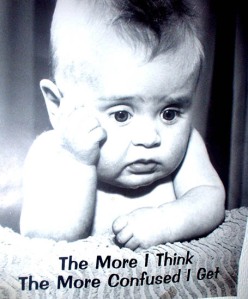Computer software patentability continues to confound. So says this caustic certiorari petition filed at the US Supreme Court, passed on by the wonderful Hal Wegner who, in his inimitable style, transmits latest US patent developments to many of us through his email group.
For those interested, a copy of this petition that takes issue with a rather splintered CAFC decision in CLS vs Alice Corp is available on Managing Intellectual Property, a leading global IP magazine.
So how do we get out of this jurisprudential morass of a mess? In the context of India at least, I’ve proposed a rather simple reading of the statutory exclusion in this editorial in the Mint. I extract the key portions of the piece below:
“The Indian Patents Act makes it amply clear that computer programs per se are not patentable. Period!
The term “per se” only means that if the invention involves something more than mere “computer software”, it is patentable. If the addition is merely cosmetic, such as an incorporation of hardware or other apparatus in a manner well known to a person skilled in the art, then it ought not to be granted a patent, since the inventive contribution resides solely in the computer program. We may require more fine-tuning on this, but let’s leave that to the courts rather than relying on the patent manual for conclusively interpreting this section.
Much like India, the UK also excludes software per se from the scope of patentability. And yet, owing to pressures from industry and in a bid to somehow harmonize with the European position, this exclusion has been all but eviscerated through clever legal sophistry. Consider a recent UK Court of Appeals case (Symbian Ltd v. Comptroller General of Patents), which states that if a software program makes some kind of a “technical contribution”, it ought to be patentable. One is hard-pressed to think of any software program that might fail this “technical contribution” test, particularly when a patent application covering such programs, is crafted by a clever patent attorney.
Indian judges ought to eschew such legal casuistry in favour of a simple straightforward reading of section 3(k), which excludes computer programs per se from patentability.”
This view appears to sync with the IPAB’s decision in the Rediff case.
If software requires protection at all, the patent system is far from optimal. It provides 20 years of protection, a time frame completely at odds with the shelf life of most software. And then there’s the issue of prior art searching, patent stacking, hold ups, defensive patenting etc. Its high time policy makers began considering a more optimal sui generis style protection for this contentious subject matter that continues to confound at an exponential rate.
ps: For those interested in the latest Indian developments on this front, Aparajitha reflected on stakeholder feedback to the IPO’s latest set of draft guidelines on patentability of software inventions. And CH Unni of the Mint did a terrific take on this issue here.

